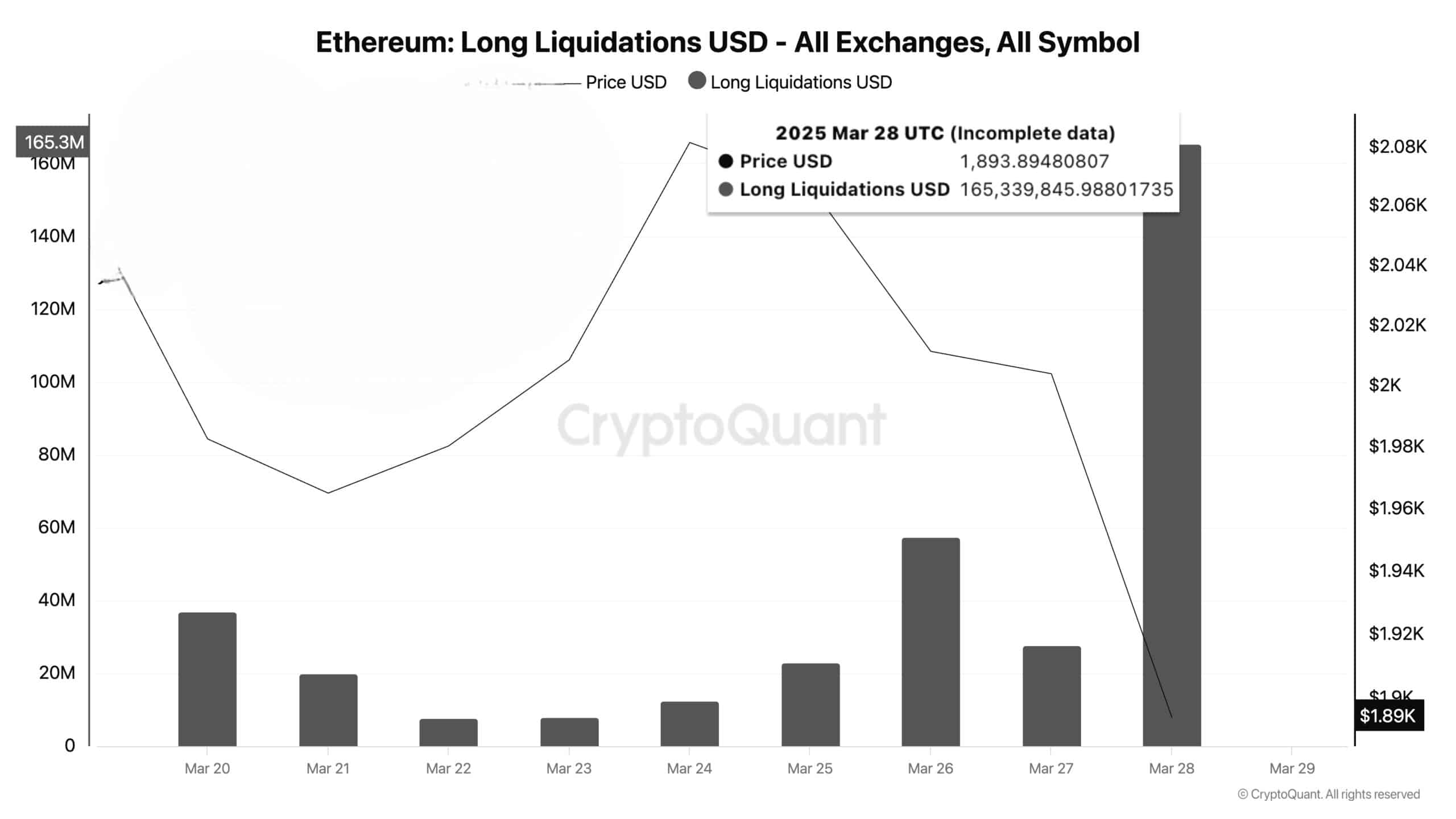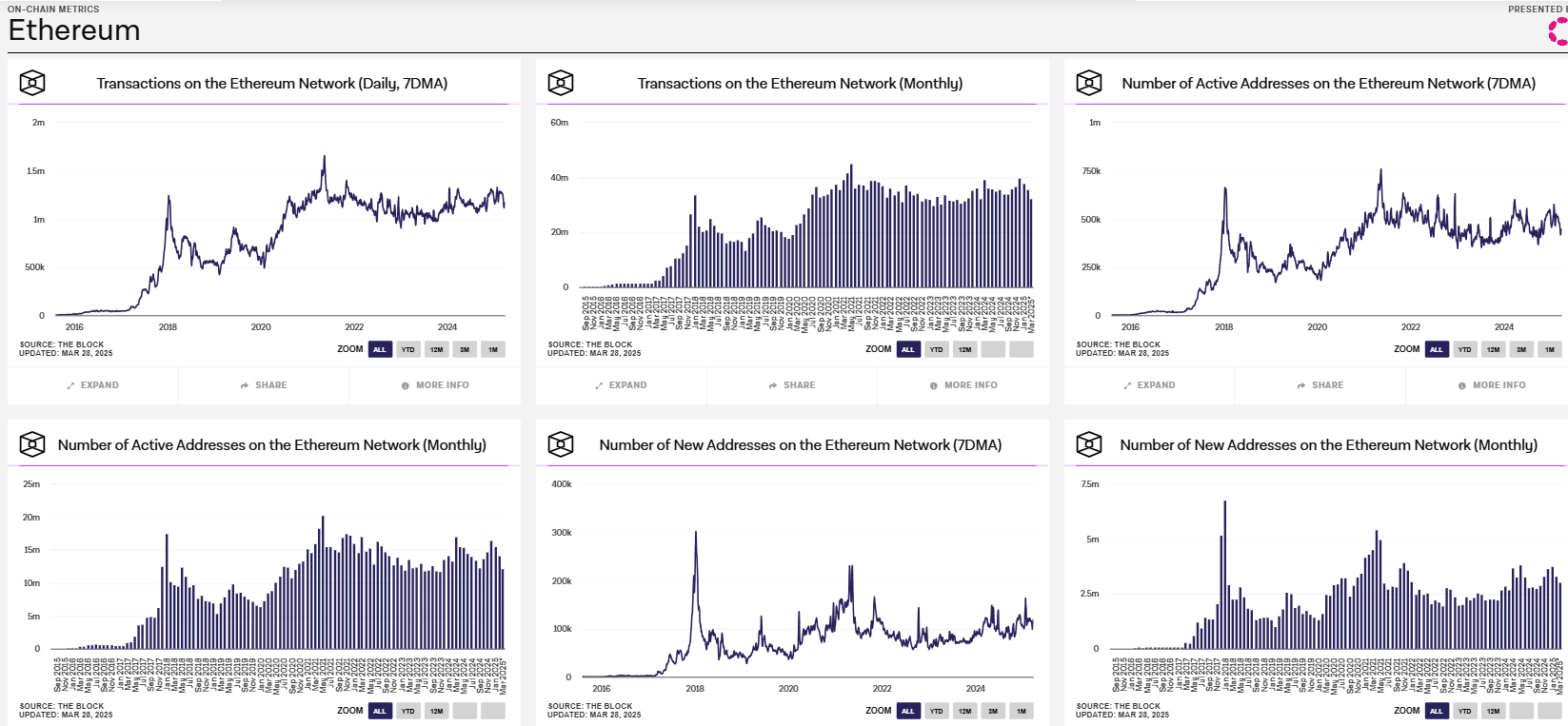-
Ethereum’s recent market struggles illustrate a bearish trend that raises concerns among investors and analysts alike.
-
The Ethereum network’s transaction activity and user engagement have notably decreased, despite its high market capitalization.
-
According to a report by CryptoQuant, approximately $165 million in long positions were liquidated as traders reacted to sudden market shifts.
This article explores Ethereum’s recent market trends, highlighting significant liquidation events and declining activity metrics amidst bearish sentiments.
Market Liquidations and Their Implications for ETH
Recent data indicates that Ethereum [ETH] has faced a marked downturn, with $165 million lost in long position liquidations over a brief window. This significant liquidative event suggests that bullish traders are struggling to maintain their positions amid rising volatility. The sell-offs were initiated as leveraged traders reacted to a sudden drop in ETH prices, leading to mandatory asset liquidation in order to cover lost positions.
Impact of Whale Activity on Market Dynamics
In conjunction with liquidation events, a noteworthy movement occurred when an Ethereum ICO participant transferred 1,700 ETH, valued at around $3.18 million, to Binance, signaling potential market sell-off intentions. This unusual influx of ETH into an exchange typically reflects bearish pressure as whales play a pivotal role in market movements. Many speculators closely monitor such actions to predict possible downtrends, further contributing to market instability.

Source: CryptoQuant
Transaction Activity and User Engagement Trends
As Ethereum’s market adjusts to these pressures, transaction activity reveals troubling tendencies. At present, daily transactions hover around 1 million, indicating a steady decline from previous peaks. This drop in transactional engagement could signal deeper issues within the network, as both active addresses and new user signups have also fallen below previous highs.
Key Metrics Reflecting Ethereum’s Current State
Data shows that Ethereum’s active addresses have decreased to below 750,000, while new addresses created monthly only totaled 2.5 million, falling short of earlier spikes. The breakdown of Ethereum’s price below traditional support levels, such as $2,200, suggests that further downside may be anticipated in the current market environment.

Source: X
Ethereum’s Position as an Investment versus Utility Network
Currently, Ethereum appears primarily as a utility network rather than an attractive investment avenue. The stagnation in both user addition rates and transaction improvements indicates waning investor confidence. Increasing sell-off activity from whales coupled with rising liquidation rates underscores a growing negative sentiment surrounding ETH’s value as an investment instrument. The confluence of these factors leads to considerable uncertainty regarding Ethereum’s future viability.
Conclusion
In summary, while Ethereum remains a cornerstone of blockchain technology, its current downturn raises critical questions about its long-term investment prospects. Bearish trends, evidenced by both liquidation events and declining network engagement, suggest potential volatility ahead. Investors may need to adopt a cautious approach as market dynamics continue to evolve.
